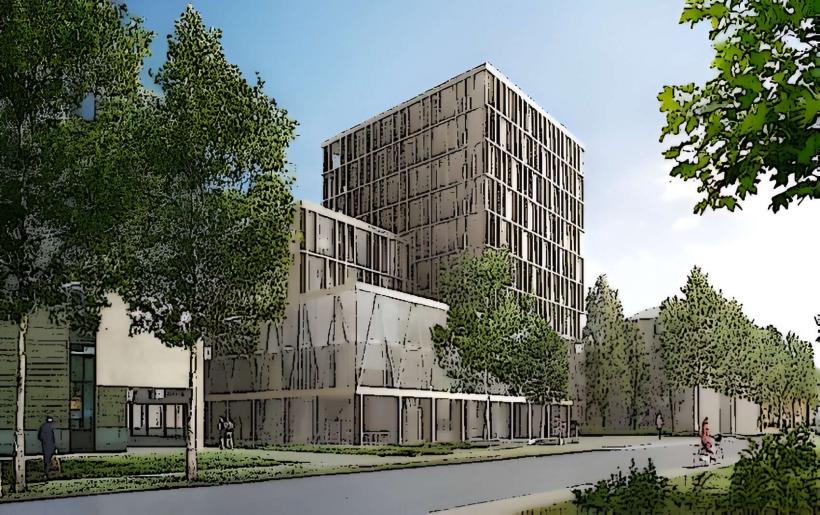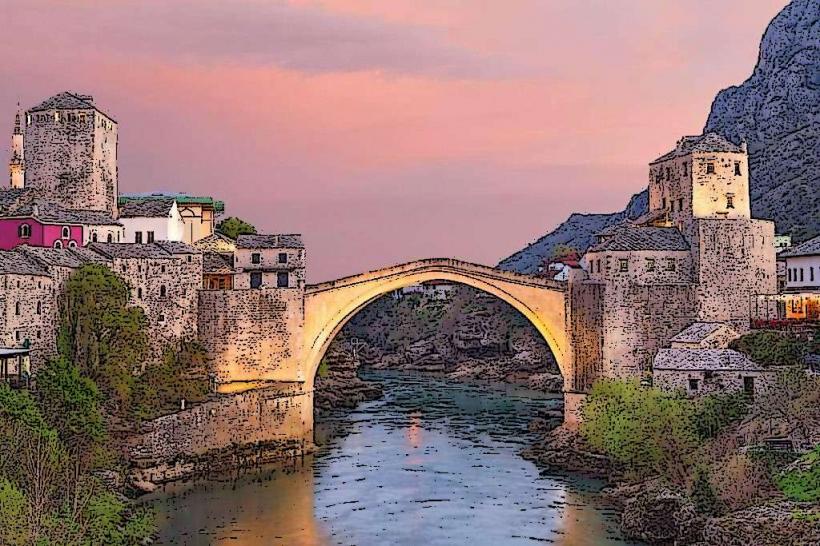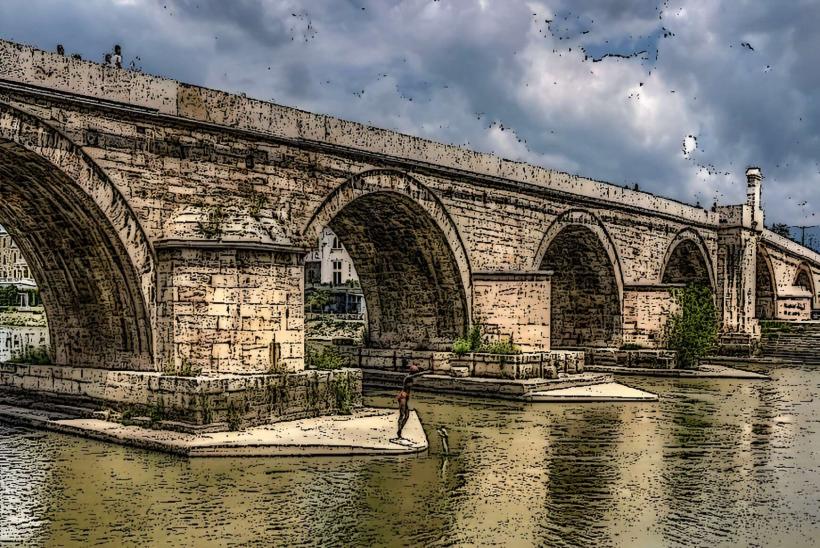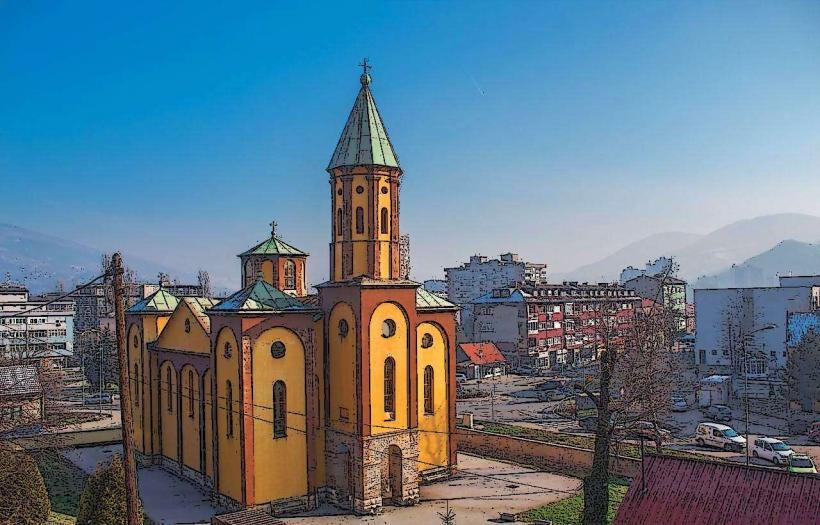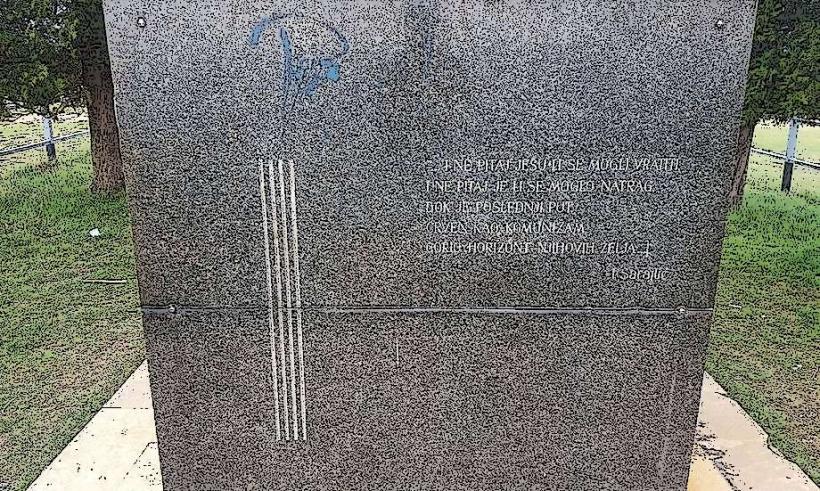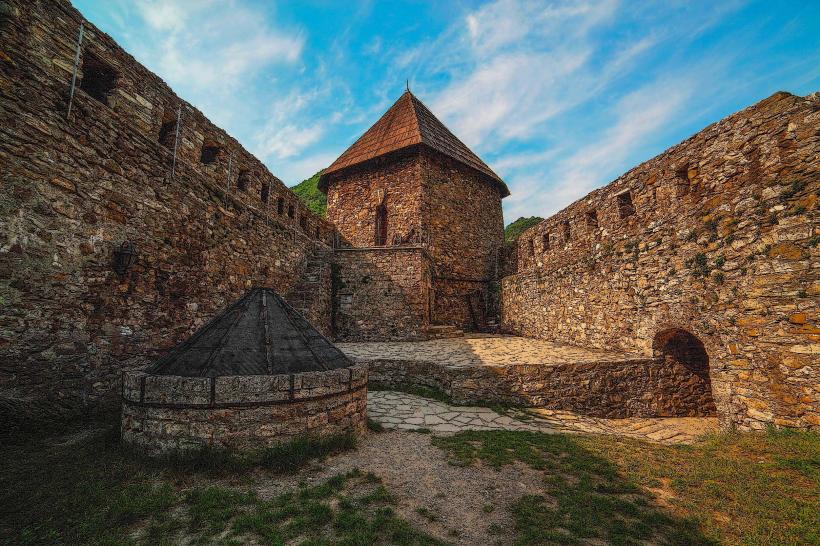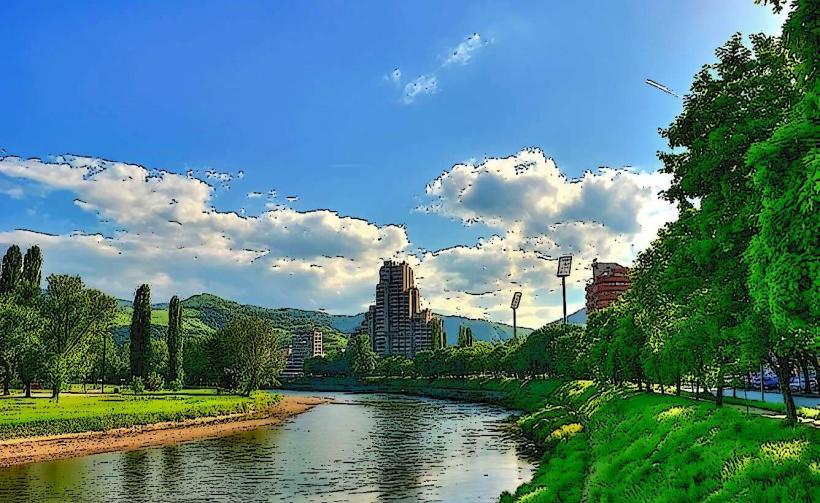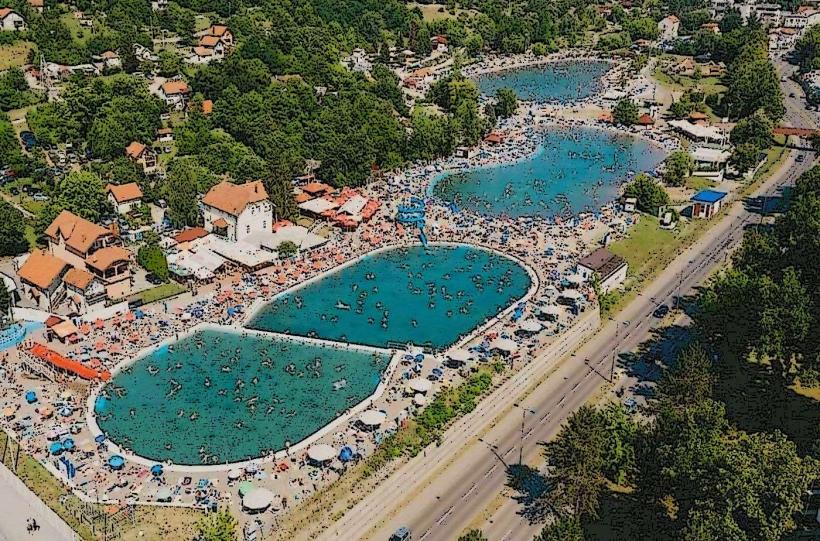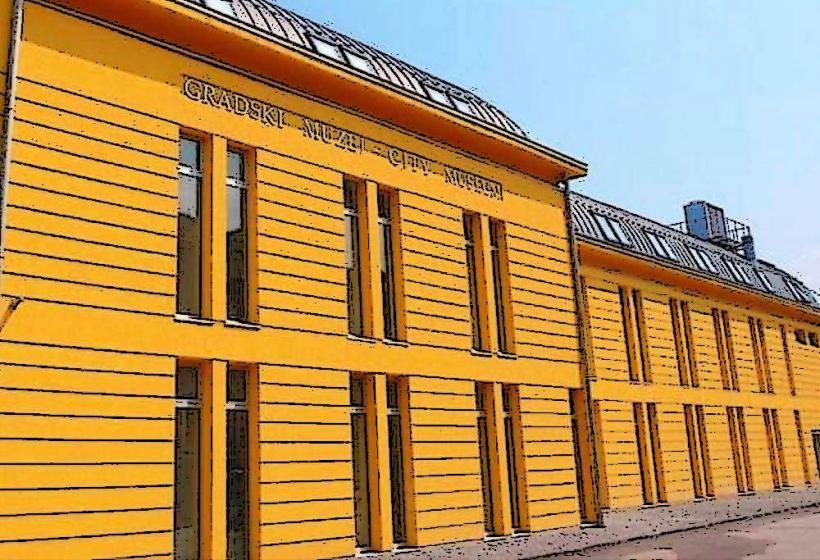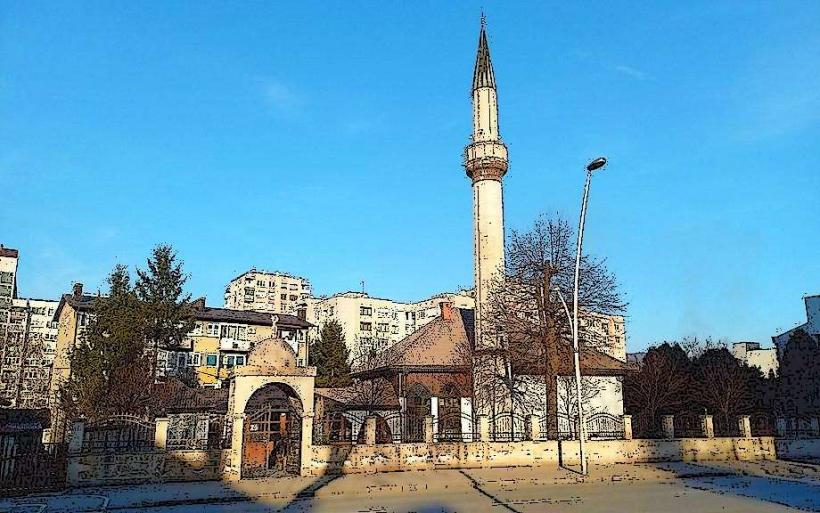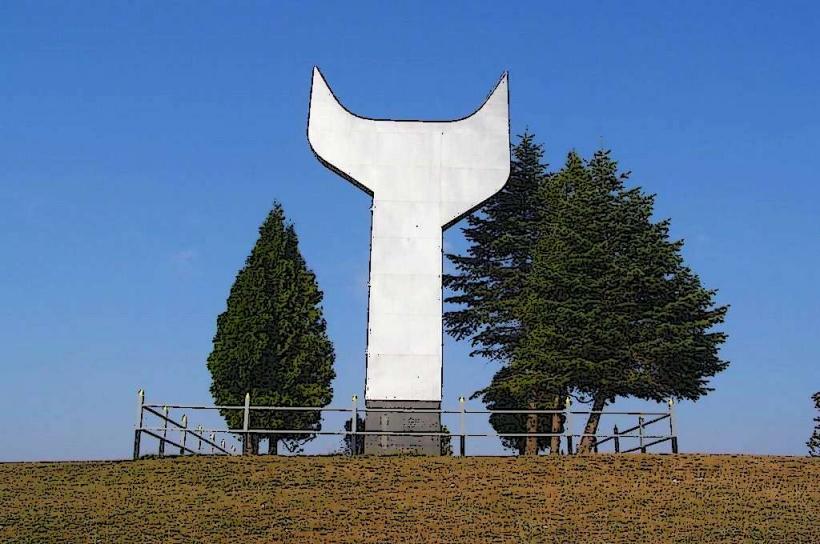Information
City: ZenicaCountry: Bosnia and Herzegovina
Continent: Europe
Zenica is a significant city in Bosnia and Herzegovina, located in the central part of the country. It is the administrative center of the Zenica-Doboj Canton in the Federation of Bosnia and Herzegovina. Historically an industrial hub, Zenica has evolved into a city that blends its rich industrial past with a growing modern economy and a diverse cultural scene. With its picturesque surroundings, nestled in the Bosna River Valley and flanked by mountains, Zenica offers both natural beauty and urban appeal.
Geography and Climate
Zenica is situated along the Bosna River, which provides both scenic views and an important waterway for the city. The city is surrounded by mountains, including Baba Mountain to the east and Žepa to the west, offering a variety of outdoor activities such as hiking and mountaineering.
The climate in Zenica is continental, characterized by hot summers and cold winters. Summers can be warm, with temperatures reaching up to 30°C (86°F), while winters are cold, often falling below freezing, with snow common during the colder months. The city experiences moderate rainfall, which helps to maintain the lush greenery of its surroundings.
History
Zenica's history dates back to Roman times, though it became an important settlement much later. The city’s development was strongly influenced by its location and resources, particularly its proximity to coal deposits and iron ore, which would become the foundation of its industrial growth.
Roman and Medieval Periods: Zenica was originally a Roman settlement, though little remains of that era. During the Middle Ages, the area became part of the Kingdom of Bosnia and later the Ottoman Empire. The Ottomans established Zenica as a small settlement and included it in the Sanjak of Bosnia. The city's importance grew with the development of trade and industry.
Ottoman Empire (1463–1878): Under Ottoman rule, Zenica became a more established town, benefiting from the empire's infrastructure and trade networks. The Ottomans introduced significant architectural elements, such as mosques, public baths, and bridges, which still stand today as symbols of the city’s cultural and historical heritage.
Austro-Hungarian Period (1878–1918): Zenica saw significant industrialization during the Austro-Hungarian Empire’s rule, primarily due to the discovery of coal and iron ore in the region. This led to the development of steel production, and Zenica grew as an industrial city, attracting workers and expanding the urban population.
Yugoslav Period (1918–1992): After World War I, Zenica became part of the Kingdom of Yugoslavia, and later, the Socialist Federal Republic of Yugoslavia. The city’s industrial base continued to expand, particularly in steel production, which would become the backbone of its economy. Zenica’s steelworks, the ArcelorMittal Zenica, is one of the largest and oldest industrial facilities in the region. During the socialist era, the city also saw urban development, with new housing projects and cultural institutions being built.
Bosnian War (1992–1995): Zenica was largely spared from the devastating impacts of the Bosnian War, although it faced challenges with refugees and displacement. The war also affected the city's economy, with many factories temporarily shutting down due to the conflict. However, Zenica emerged from the war relatively intact compared to other cities in Bosnia and Herzegovina, and it began to recover in the post-war period.
Culture and People
Zenica’s population is predominantly Bosniak, with a mix of Croats, Serbs, and other ethnic groups. The city’s population has been shaped by its industrial character, with many people coming from other parts of Bosnia and Herzegovina to work in the steel factories.
Religious Diversity: Zenica is home to various religious communities, with the majority of the population practicing Islam (Bosniaks), followed by Christian Orthodox (Serbs) and Catholics (Croats). Religious sites such as mosques, churches, and Catholic chapels contribute to the city's cultural and spiritual diversity.
Cuisine: The cuisine of Zenica reflects the broader Balkan traditions, with strong Ottoman and Mediterranean influences. Local specialties include ćevapi (grilled minced meat), sarma (stuffed cabbage rolls), burek (savory pastries), and pita (pie). The region is also known for its rich coffee culture, particularly Turkish coffee, and a variety of sweets such as baklava and tufahija (a dessert made of apples, sugar, and walnuts).
Arts and Festivals: Zenica has a vibrant cultural life, and several institutions and events promote local arts and culture. The Zenica Cultural Center is a key institution in the city, hosting various performances, concerts, and exhibitions. The city is also home to a variety of local theaters and music ensembles. Zenica Summer, an annual festival held during the summer months, is a major cultural event featuring live music, dance performances, and traditional arts.
Languages: The official language in Zenica is Bosnian, though Serbian and Croatian are also spoken by local communities. The city's residents typically speak Bosnian with some regional dialectal variations.
Economy and Development
Zenica is a key industrial city in Bosnia and Herzegovina, known primarily for its steel industry. The city’s economy has historically been tied to the ArcelorMittal Zenica steelworks, one of the largest employers in the region. Despite a decline in heavy industry in Bosnia and Herzegovina after the war, Zenica remains an industrial hub with a focus on steel production, manufacturing, and construction.
Industry: The ArcelorMittal Zenica steelworks remains one of the most significant industrial facilities in the city, producing a wide range of steel products. In addition to the steel industry, Zenica has smaller industrial sectors, including textiles, food production, and furniture manufacturing.
Services and Trade: In recent years, Zenica has seen growth in the services sector, including retail, tourism, and banking. The city’s central location in Bosnia and Herzegovina makes it an important trade and logistics hub, with easy access to both domestic and international markets. Zenica is also known for its shopping centers, including Bingo City Center, which provide a wide range of goods and services to local residents.
Tourism: Zenica is not as famous for tourism as some other cities in Bosnia and Herzegovina, but it offers several attractions for visitors. The surrounding mountain ranges provide opportunities for outdoor activities such as hiking, mountain biking, and winter sports. The Bosna River and surrounding landscapes offer scenic views, making Zenica an ideal stop for nature lovers. Kakanj Cave, located near Zenica, is also a popular spot for visitors interested in spelunking and geology.
Education
Zenica has a robust educational system with a range of institutions offering quality education. The city is home to University of Zenica, which offers a wide variety of programs, including engineering, economics, and social sciences. The university has a strong reputation for its contributions to the educational development of the region. Zenica also has several high schools, vocational schools, and language institutes.
Transportation
Zenica is well-connected to other parts of Bosnia and Herzegovina and the wider region through various forms of transportation.
Roads: Zenica is located along major highways connecting the country’s key cities. The Zenica–Sarajevo and Zenica–Tuzla roads are among the most important for local and regional traffic.
Rail: Zenica has a central railway station, with regular services linking the city to other major cities in Bosnia and Herzegovina and neighboring countries, including Croatia and Serbia.
Public Transport: The city has a well-developed public transport system, including buses, which connect the city center to suburban areas. There are also taxis and private transport services available.
Airports: Although Zenica does not have its own airport, the nearest international airport is Sarajevo International Airport, about an hour's drive from the city. This airport provides access to international flights and is the main hub for air travel in the region.
Conclusion
Zenica is a city that embodies the intersection of industrial history and natural beauty. Its industrial roots continue to play a central role in its economy, but the city has also embraced modernity with a growing service sector and cultural scene. Whether through its historical landmarks, proximity to nature, or strong community spirit, Zenica offers a glimpse into the heart of Bosnia and Herzegovina.

